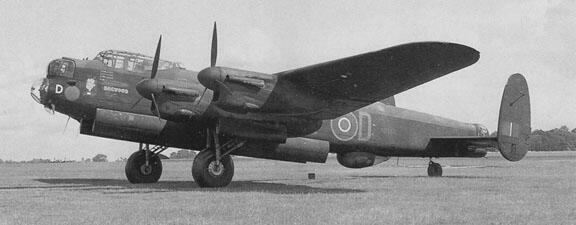WARBIRDS RESOURCE GROUP > BRITISH AVIATION > BOMBERS > PREVIOUS PAGE

A long, unobstructed bomb bay meant that the Lancaster could take the largest bombs used by the RAF, including the 4,000 lb (1,800 kg), 8,000 lb (3,600 kg), and 12,000 lb (5,400 kg) blockbusters, loads often supplemented with smaller bombs or incendiaries. The versatility of the Lancaster was such that it was chosen to equip 617 Squadron and was modified to carry the Upkeep "Bouncing bomb" designed by Barnes Wallis for Operation Chastise, the attack on Germany Ruhr Valley dams. Although the Lancaster was primarily a night bomber, it excelled in many other roles, including daylight precision bombing: in the latter role some Lancasters were adapted to carry the 12,000 lb (5,400 kg) Tallboy and then the 22,000 lb (10,000 kg) Grand Slam earthquake bombs (also designed by Wallis).
Postwar, the Lancaster was supplanted as the RAF's main strategic bomber by the Avro Lincoln, a larger version of the Lancaster. The Lancaster took on the role of long range anti-submarine patrol aircraft (later supplanted by the Avro Shackleton) and air-sea rescue. It was also used for photo-reconnaissance and aerial mapping, as a flying tanker for aerial refuelling and as the Avro Lancastrian, a long-range, high-speed, transatlantic, passenger and postal delivery airliner. In March 1946, a Lancastrian of BSAA flew the first scheduled flight from the new London Heathrow Airport.
|
- Design - Development - Armament - Avionics |
- Specifications - Operational History - Variants - Survivors |
Sources:
Wikipedia
WARBIRDS RESOURCE GROUP > BRITISH AVIATION > BOMBERS > PREVIOUS PAGE
